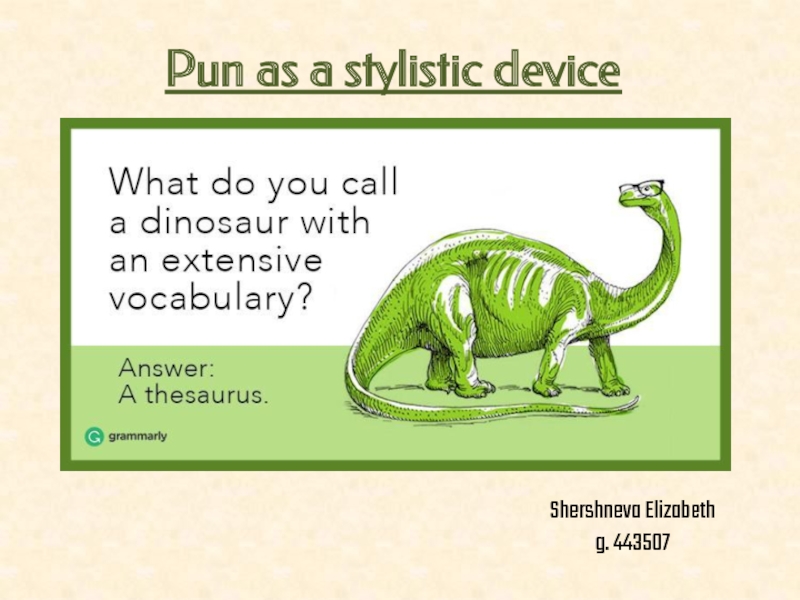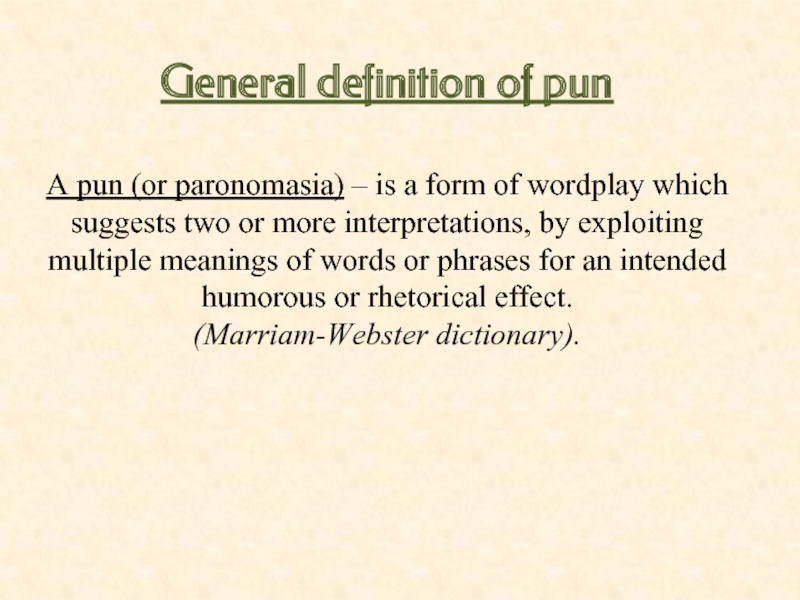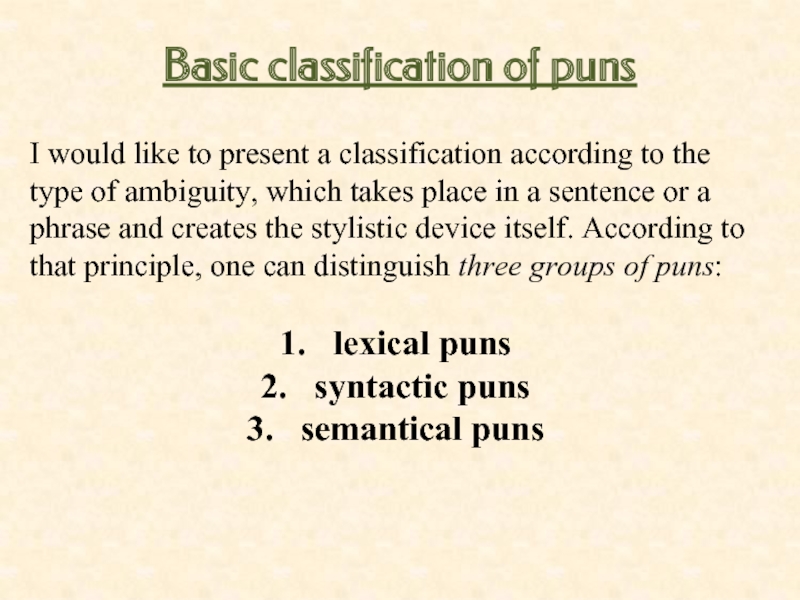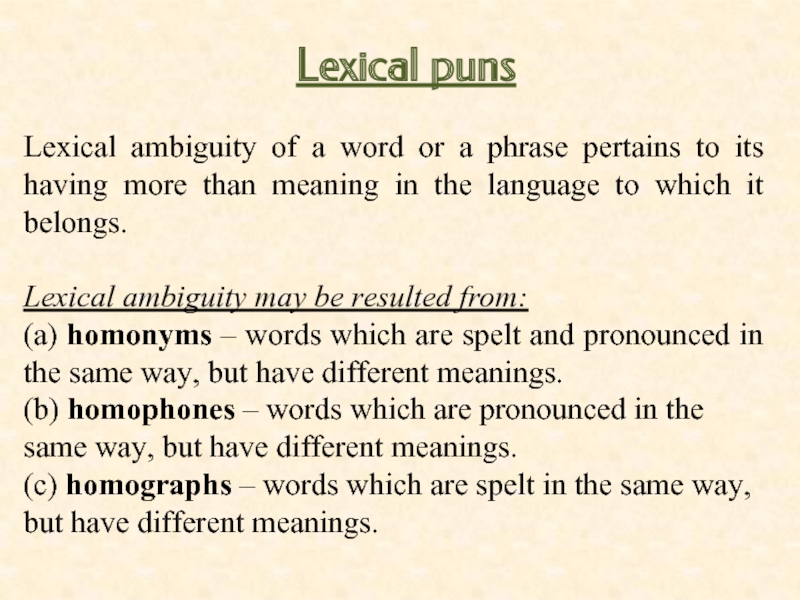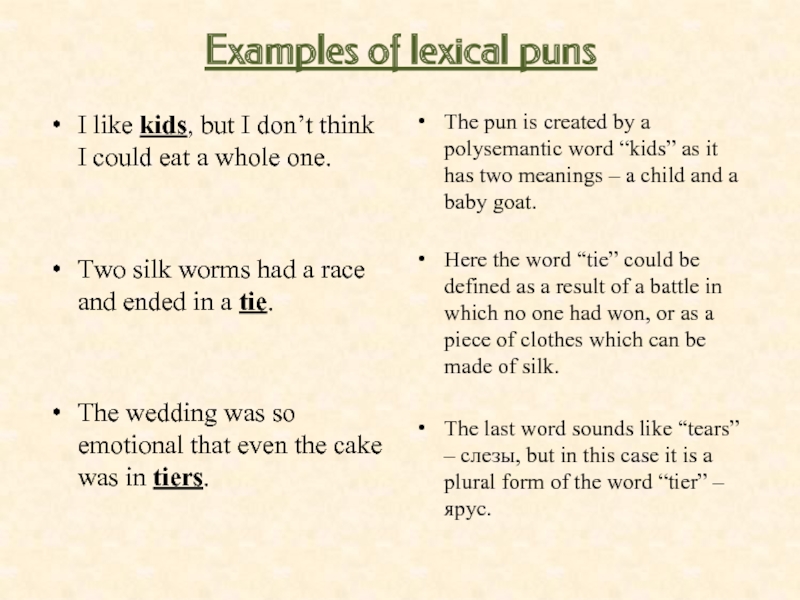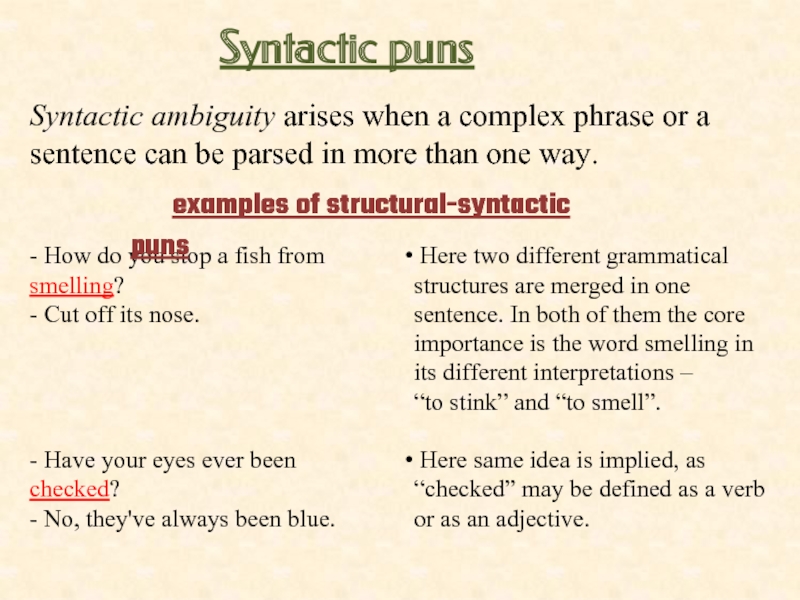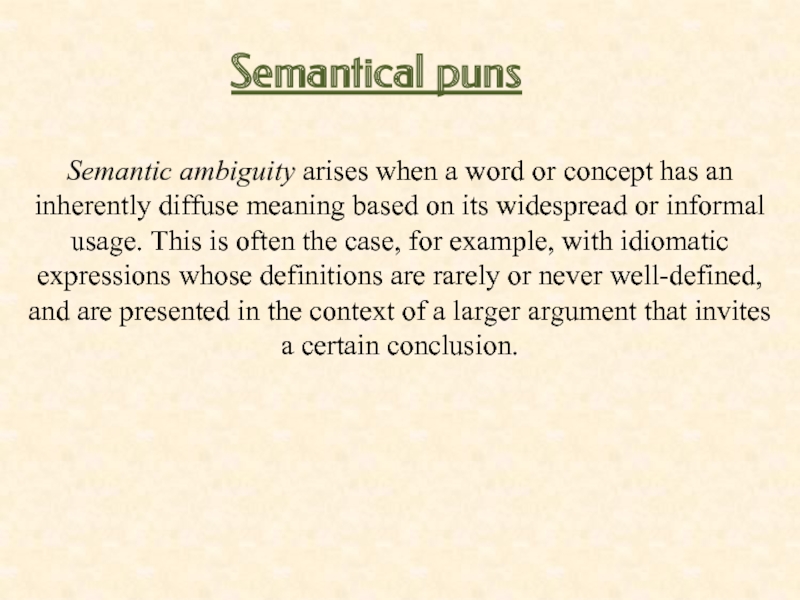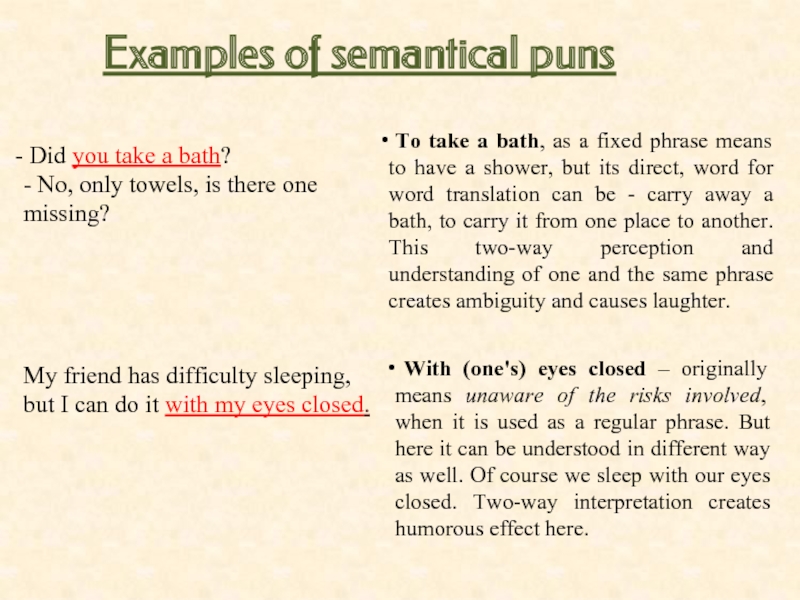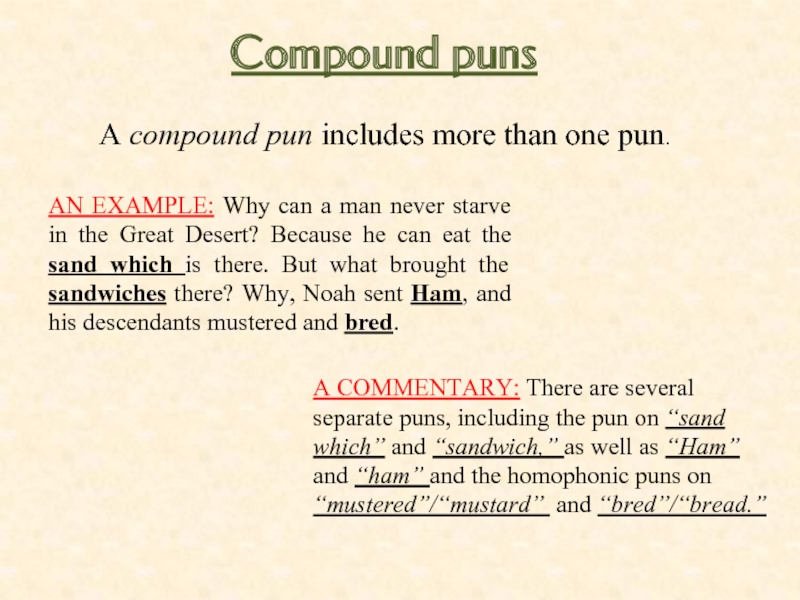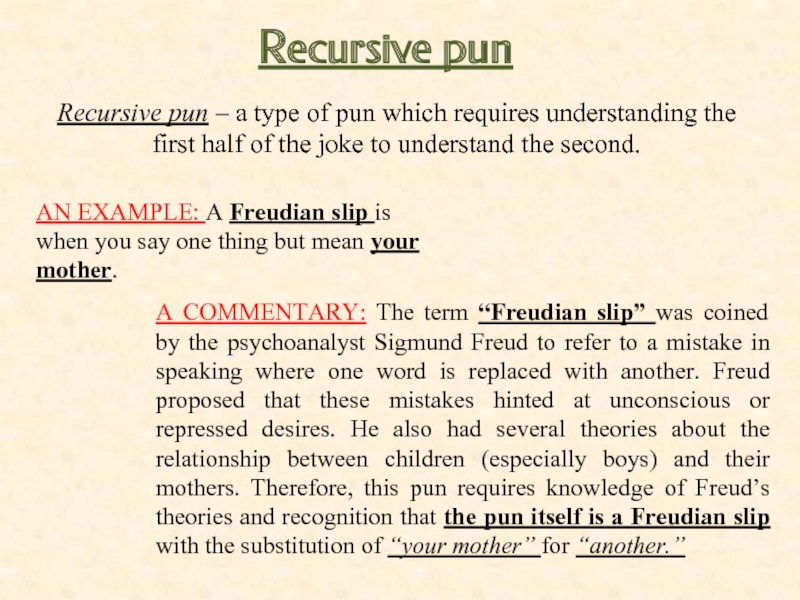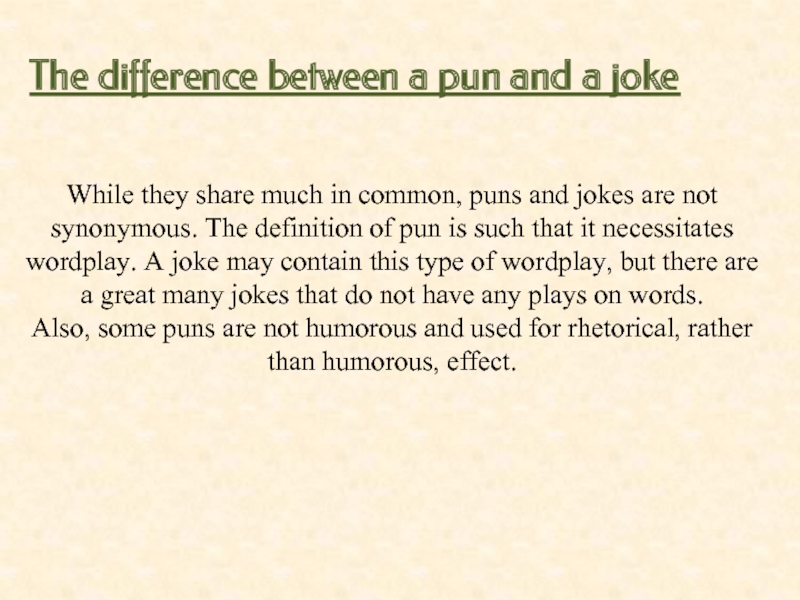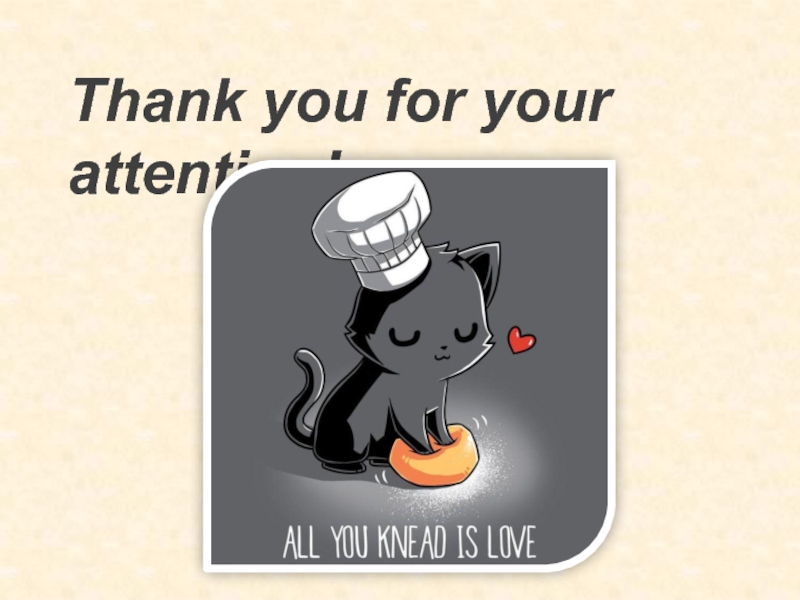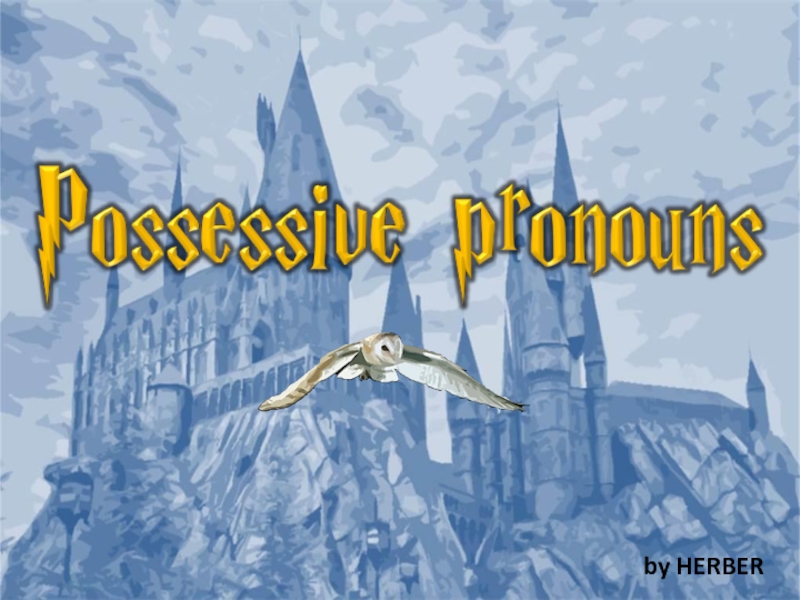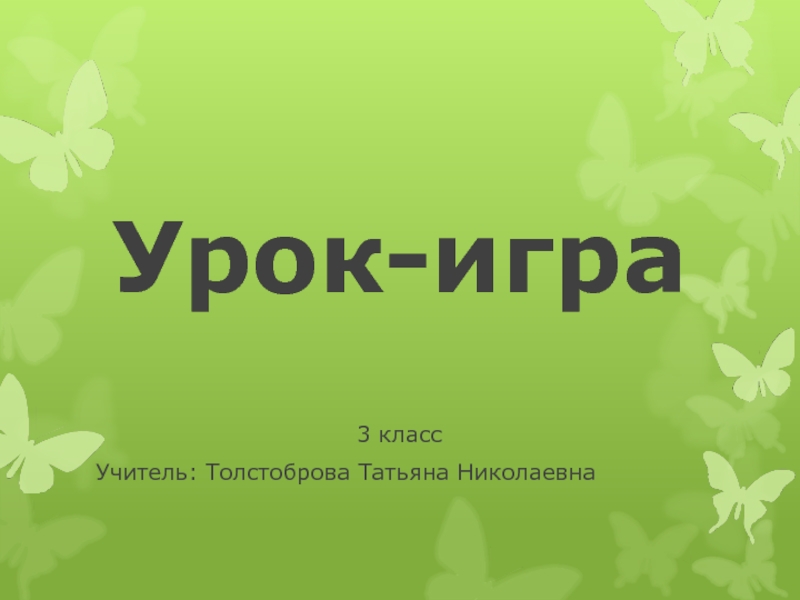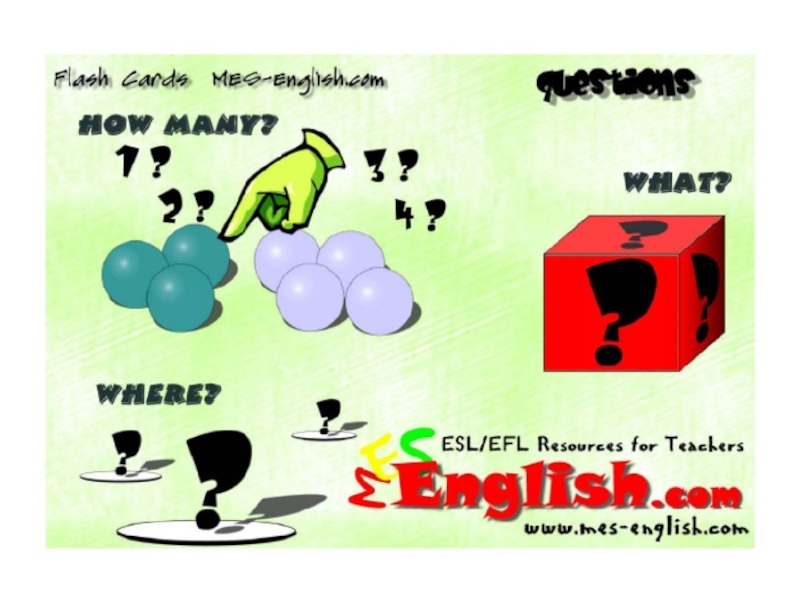- Главная
- Разное
- Дизайн
- Бизнес и предпринимательство
- Аналитика
- Образование
- Развлечения
- Красота и здоровье
- Финансы
- Государство
- Путешествия
- Спорт
- Недвижимость
- Армия
- Графика
- Культурология
- Еда и кулинария
- Лингвистика
- Английский язык
- Астрономия
- Алгебра
- Биология
- География
- Детские презентации
- Информатика
- История
- Литература
- Маркетинг
- Математика
- Медицина
- Менеджмент
- Музыка
- МХК
- Немецкий язык
- ОБЖ
- Обществознание
- Окружающий мир
- Педагогика
- Русский язык
- Технология
- Физика
- Философия
- Химия
- Шаблоны, картинки для презентаций
- Экология
- Экономика
- Юриспруденция
Pun as a stylistic device презентация
Содержание
- 1. Pun as a stylistic device
- 2. A pun (or paronomasia) – is a
- 3. I would like to present a classification
- 4. Lexical ambiguity of a word or a
- 5. I like kids, but I don’t think
- 6. - How do you stop a fish
- 7. Semantic ambiguity arises when a word or
- 8. Examples of semantical puns Did
- 9. Compound puns AN EXAMPLE: Why
- 10. Recursive pun AN
- 11. While they share much in common,
- 12. Thank you for your attention!
Слайд 2A pun (or paronomasia) – is a form of wordplay which
General definition of pun
Слайд 3I would like to present a classification according to the type
lexical puns
syntactic puns
semantical puns
Basic classification of puns
Слайд 4Lexical ambiguity of a word or a phrase pertains to its
Lexical ambiguity may be resulted from:
(а) homonyms – words which are spelt and pronounced in the same way, but have different meanings.
(b) homophones – words which are pronounced in the same way, but have different meanings.
(c) homographs – words which are spelt in the same way, but have different meanings.
Lexical puns
Слайд 5I like kids, but I don’t think I could eat a
Two silk worms had a race and ended in a tie.
The wedding was so emotional that even the cake was in tiers.
The pun is created by a polysemantic word “kids” as it has two meanings – a child and a baby goat.
Here the word “tie” could be defined as a result of a battle in which no one had won, or as a piece of clothes which can be made of silk.
The last word sounds like “tears” – слезы, but in this case it is a plural form of the word “tier” – ярус.
Examples of lexical puns
Слайд 6- How do you stop a fish from smelling? - Cut
- Have your eyes ever been checked?
- No, they've always been blue.
Syntactic puns
Syntactic ambiguity arises when a complex phrase or a sentence can be parsed in more than one way.
Here two different grammatical structures are merged in one sentence. In both of them the core importance is the word smelling in its different interpretations –
“to stink” and “to smell”.
Here same idea is implied, as “checked” may be defined as a verb or as an adjective.
examples of structural-syntactic puns
Слайд 7Semantic ambiguity arises when a word or concept has an inherently
Semantical puns
Слайд 8 Examples of semantical puns
Did you take a bath?
-
To take a bath, as a fixed phrase means to have a shower, but its direct, word for word translation can be - carry away a bath, to carry it from one place to another. This two-way perception and understanding of one and the same phrase creates ambiguity and causes laughter.
My friend has difficulty sleeping, but I can do it with my eyes closed.
With (one's) eyes closed – originally means unaware of the risks involved, when it is used as a regular phrase. But here it can be understood in different way as well. Of course we sleep with our eyes closed. Two-way interpretation creates humorous effect here.
Слайд 9Compound puns
AN EXAMPLE: Why can a man never starve in
A COMMENTARY: There are several separate puns, including the pun on “sand which” and “sandwich,” as well as “Ham”
and “ham” and the homophonic puns on “mustered”/“mustard” and “bred”/“bread.”
А compound pun includes more than one pun.
Слайд 10 Recursive pun
AN EXAMPLE: A Freudian slip is when you
A COMMENTARY: The term “Freudian slip” was coined by the psychoanalyst Sigmund Freud to refer to a mistake in speaking where one word is replaced with another. Freud proposed that these mistakes hinted at unconscious or repressed desires. He also had several theories about the relationship between children (especially boys) and their mothers. Therefore, this pun requires knowledge of Freud’s theories and recognition that the pun itself is a Freudian slip with the substitution of “your mother” for “another.”
Recursive pun – a type of pun which requires understanding the first half of the joke to understand the second.
Слайд 11
While they share much in common, puns and jokes are not
Also, some puns are not humorous and used for rhetorical, rather than humorous, effect.
The difference between a pun and a joke
